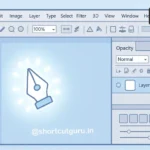Introduction
Quick Math: Mathematics is a critical life skill, and learning to solve problems faster can save time and boost confidence. Many people struggle with math, but some powerful shortcuts and tricks can make even complex calculations manageable. We have curated a list of some of the best math tricks that will allow students, professionals, and enthusiasts to excel in their mathematical calculations easily.
Table of Contents – Quick Math
Quick Math Multiplying Tricks
Multiplying Trick by 9
One of the fastest ways to multiply by 9 is using your hands. Hold out all 10 fingers and fold down the finger that corresponds to the number you want to multiply. The number of fingers to the left of the folded finger represents the tens digit, while the number of fingers to the right represents the units.

For example:
- To multiply 9 × 7: fold down your 7th finger. Three fingers are on your right and six on your left. The answer is 63.
Multiplying Trick by 11
Multiplying by 11 is simple for two-digit numbers. Take the two digits of the number, then place the sum of the digits in between. If the sum is greater than 9, carry over the 1.
Example:
- 34 × 11: Add 3 + 4 = 7, and place it between the digits for a result of 374.
- 57 × 11: Add 5 + 7 = 12, and carry over the 1 to get 627.
Squaring Numbers Ending in 5
For any number ending in 5, squaring it can be done in a few seconds. Multiply the first digit(s) by itself plus 1, then add 25 to the result.
Example:
- 25²: Multiply 2 × (2 + 1) = 2 × 3 = 6. Add 25, resulting in 625.
- 65²: Multiply 6 × (6 + 1) = 6 × 7 = 42. Add 25, resulting in 4225.
Finding Percentages Easily
Quick Math – 10% Rule
To quickly find 10% of any number, simply move the decimal one place to the left.
Example:
- 10% of 250 = 25
- 10% of 472 = 47.2
Doubling and Halving for 5%
To find 5% of a number, first find 10% and then divide it by 2.
Example:
- 5% of 200: 10% is 20, and half of 20 is 10.
- 5% of 480: 10% is 48, and half of 48 is 24.
Master Fast Division
Quick Math – Divisibility Rules
There are several tricks to quick math determine whether a number is divisible by another without performing the division.
- Divisible by 2: The number ends in 0, 2, 4, 6, or 8.
- Divisible by 3: The sum of the digits is divisible by 3.
- Divisible by 4: A number composed of the final two digits is divisible by 4.
- Divisible by 5: The number ends in 0 or 5.
- Divisible by 6: The number must be divisible by both 2 and 3.
- Divisible by 9: The sum of the digits is divisible by 9.
Estimation and Rounding Techniques
Rounding for Easy Calculations
When performing mental calculations, rounding numbers can simplify the process. Round the numbers to the nearest 10, 100, or 1000, and adjust the final result accordingly.
Example:
- 49 + 33: Round 49 to 50, and 33 to 30, resulting in an estimated sum of 80. Adjust by subtracting 1 to get the correct sum of 82.
- 385 × 7: Round 385 to 400, and calculate 400 × 7 = 2800. Adjust by subtracting (15 × 7) = 105, resulting in 2695.
Adding Large Numbers
Quick Math – Breaking It Down
To add large numbers, break them down into smaller parts. Add the hundreds, tens, and units separately, then combine the results.

Example:
- 358 + 673:
- Add the hundreds: 300 + 600 = 900
- Add the tens: 50 + 70 = 120
- Add the units: 8 + 3 = 11
- Combine: 900 + 120 + 11 = 1031
Mental Math for Subtraction
Quick Math – Complementary Numbers
To subtract two numbers, you can use complementary numbers. Subtract the second number from a round number like 1000, then adjust.
Example:
- 1000 – 673: First, subtract 673 from 1000, which gives 327.
- 500 – 128: Break it down as 500 – 130 = 370. Add back 2 to get 372.
Multiplying Trick Large Numbers Using Patterns
Quick Math – Using Base Numbers
For numbers close to powers of 10, such as 98 × 97, find the difference from the base (100), subtract diagonally, and multiply the differences.
Example:
- 98 × 97: The difference from 100 is 2 and 3, respectively.
- Subtract diagonally: 98 – 3 = 95 or 97 – 2 = 95.
- Multiply the differences: 2 × 3 = 6.
- The answer is 9506.
Square Roots and Cube Roots
Estimating Square Roots
To estimate the square root of non-perfect squares, find the nearest perfect square, and use that as a reference point. Adjust based on how close the number is to the reference square.
Example:
- Estimate √50: The closest perfect square is 49, so √50 ≈ 7. Adjust upward slightly to approximately 7.07.
Quick Math Cube Roots
Cube roots can be approximated by identifying nearby perfect cubes. For numbers between two perfect cubes, estimate by checking how close the number is to the cube root values.
Example:
- Cube root of 50: The closest cubes are 27 (³√3) and 64 (³√4). Estimate the cube root of 50 as slightly above 3, or roughly 3.68.
Prime Number Identification
Quick Math Test for Small Numbers
To determine whether a small number is prime, divide it by prime numbers less than or equal to its square root. The number is prime if it can be divided into no whole numbers.
Example:
- Are 29 primes? 29 has a square root of around 5.4. Verify if 2, 3, and 5 are divisible by:
- 29 ÷ 2 = not a whole number
- 29 ÷ 3 = not a whole number
- 29 ÷ 5 = not a whole number
- Since none of these divisions results in a whole number, 29 is prime.
For larger numbers, advanced algorithms are required, but this method is effective for smaller values up to about 100.
Least Common Multiple (LCM) and Greatest Common Divisor (GCD)
Finding LCM Using Prime Factorization
To find the LCM of two or more numbers, use prime factorization. List out the prime factors for each number, and multiply the highest powers of all primes present.
Example:
- Find the LCM of 12 and 18:
- Prime factors of 12 = 2² × 3
- Prime factors of 18 = 2 × 3²
- The LCM = 2² × 3² = 4 × 9 = 36
GCD Using the Euclidean Algorithm
The greatest common divisor can be efficiently found using the Euclidean algorithm. Subtract the smaller number from the larger one repeatedly until the numbers are equal, or apply the remainder method:
Example:
- Determine 48 and 18’s GCD:
- Step 1: 48 ÷ 18 = 2 remainder 12
- Step 2: 18 ÷ 12 = 1 remainder 6
- Step 3: 12 ÷ 6 = 2 remainder 0
- The GCD is 6.
Fractions: Simplifying and Converting
Quick Math Simplifying Fractions
To simplify fractions, divide both the numerator and the denominator by their greatest common divisor (GCD).
Example:
- Simplify 24/36:
- The GCD of 24 and 36 is 12.
- 24 ÷ 12 = 2, and 36 ÷ 12 = 3.
- The simplified fraction is 2/3.
Converting Mixed Numbers to Improper Fractions
Multiply the whole integer by the denominator and then add the numerator to turn a mixed number into an improper fraction.
Example:
- Convert 3 1/4 to an improper fraction:
- 3 × 4 = 12, then add the numerator (1): 12 + 1 = 13.
- The improper fraction is 13/4.

Mental Math for Multiplying Trick by Powers of 10
Multiplying numbers by powers of 10 is straightforward by simply adding zeroes to the number.
Multiplying Trick by 1000, 100, and 10
- For 1000, add three zeroes.
- For 100, add two zeroes.
- For 10, add one zero.
Example:
- 45 × 100 = 4500
- 32 × 1000 = 32,000
- 87 × 10 = 870
Working with Exponents
Shortcut for Multiplying Exponents with the Same Base
Add the exponents when multiplying two exponents by the same base.
Example:
- 23×24=23+4=27=1282^3 × 2^4 = 2^{3+4} = 2^7 = 12823×24=23+4=27=128
Math Tricks shortcut Shortcut for Dividing Exponents with the Same Base
Subtract the exponents when dividing exponents by the same base.
Example:
- 56÷52=56−2=54=6255^6 ÷ 5^2 = 5^{6-2} = 5^4 = 62556÷52=56−2=54=625
Math Tricks Raising a Power to a Power
Multiply the exponents when converting one exponent to another.
Example:
- (32)4=32×4=38=6561(3^2)^4 = 3^{2×4} = 3^8 = 6561(32)4=32×4=38=6561
Quick Math Decimal to Fraction Conversion
How to Convert a Fraction from a Decimal
To change a decimal to a fraction, just take these easy actions:
- Write the decimal over 1 (e.g., 0.75 becomes 0.751\frac{0.75}{1}10.75).
- Multiply both the numerator and denominator by 10 until you get rid of the decimal places (e.g., 0.751\frac{0.75}{1}10.75 becomes 75100\frac{75}{100}10075).
- Simplify the final fraction obtained by taking the greatest common divisor (GCD) of the numerator and denominator.
Example:
- Convert 0.75 to a fraction:
- 0.75=751000.75 = \frac{75}{100}0.75=10075
- GCD of 75 and 100 is 25.
- 75÷25100÷25=34\frac{75 ÷ 25}{100 ÷ 25} = \frac{3}{4}100÷2575÷25=43.
Converting Recurring Decimals to Fractions
For recurring decimals, there’s a specific method:
- Let the recurring decimal be xxx. For example, x=0.6666…x = 0.6666…x=0.6666….
- Multiply by 10 (or higher power of 10) to shift the decimal point to one full cycle of the repeating part (e.g., 10x=6.6666…10x = 6.6666…10x=6.6666…).
- Subtract the original xxx from the new equation: 10x−x=6.6666…−0.6666…10x – x = 6.6666… – 0.6666…10x−x=6.6666…−0.6666…, simplifying to 9x=69x = 69x=6.
- Solve for xxx to find the fraction: x=69=23x = \frac{6}{9} = \frac{2}{3}x=96=32.
Square and Cube Roots: Simplifying Expressions
Fast Maths Finding Square Roots
When simplifying square roots, look for perfect squares within the number to factor.
Example:
- 72\sqrt{72}72
- 72 can be factored as 36×236 × 236×2.
- 36=6\sqrt{36} = 636=6, so 72=62\sqrt{72} = 6\sqrt{2}72=62.
Quick Math – Estimating Cube Roots
Cube roots can be estimated by finding the nearest perfect cube and adjusting accordingly.
Example:
- 503\sqrt[3]{50}350
- The nearest perfect cubes are 273=3\sqrt[3]{27} = 3327=3 and 643=4\sqrt[3]{64} = 4364=4.
- Since 50 is closer to 64, estimate 503≈3.7\sqrt[3]{50} \approx. 3.7350≈3.7.
Proportions and Ratios: Solving for Unknowns
Using Cross-Multiplication for Ratios
In a proportion ab=cd\frac{a}{b} = \frac{c}{d}ba=dc, you can solve for an unknown by cross-multiplying.
Example:
- Solve for xxx in 23=x9\frac{2}{3} = \frac{x}{9}32=9x.
- Cross-multiply: 2×9=3×x2 × 9 = 3 × x2×9=3×x, resulting in 18=3×18 = 3×18=3x.
- Divide by 3: x=6x = 6x=6.
Quick Math – Simplifying Ratios
Divide both sides of a ratio by their greatest common divisor (GCD) to make it simpler.
Example:
- Simplify the ratio 16:24:
- GCD of 16 and 24 is 8.
- 16÷824÷8=2:3\frac{16 ÷ 8}{24 ÷ 8} = 2:324÷816÷8=2:3.

Solving Algebraic Equations Quickly
Using the Distributive Property
The distributive property is useful for simplifying and solving algebraic expressions:
a(b+c)=ab+aca(b + c) = ab + aca(b+c)=ab+ac
Example:
- Simplify 3(x+4)3(x + 4)3(x+4):
- 3(x+4)=3x+123(x + 4) = 3x + 123(x+4)=3x+12.
Fast Maths Solving Linear Equations
To solve linear equations, isolate the variable by reversing operations.
Example:
- Solve 2x+3=112x + 3 = 112x+3=11:
- Subtract 3 from both sides: 2x=82x = 82x=8.
- Divide by 2: x=4x = 4x=4.
Solving Quadratic Equations Using the Quadratic Formula
For quadratic equations ax2+bx+c=0ax^2 + bx + c = 0ax2+bx+c=0, use the quadratic formula:
x=−b±b2−4ac2ax = \frac{-b \pm \sqrt{b^2 – 4ac}}{2a}x=2a−b±b2−4ac
Example:
- Solve x2−4x−5=0x^2 – 4x – 5 = 0x2−4x−5=0:
- Using the quadratic formula, a=1a = 1a=1, b=−4b = -4b=−4, and c=−5c = -5c=−5.
- Substitute into the formula:
x=−(−4)±(−4)2−4(1)(−5)2(1)=4±16+202=4±362x = \frac{-(-4) \pm \sqrt{(-4)^2 – 4(1)(-5)}}{2(1)} = \frac{4 \pm \sqrt{16 + 20}}{2} = \frac{4 \pm \sqrt{36}}{2}x=2(1)−(−4)±(−4)2−4(1)(−5)=24±16+20=24±36
- 36=6\sqrt{36} = 636=6, so x=4+62=5x = \frac{4 + 6}{2} = 5x=24+6=5 or x=4−62=−1x = \frac{4 – 6}{2} = -1x=24−6=−1.
- The solutions are x=5x = 5x=5 and x=−1x = -1x=−1.
Solving Word Problems with Equations
Translating Words into Quick Math
When solving word problems, translate the language of the problem into mathematical expressions.
Example:
- ” It is possible to write “Three times a number plus five is twenty” as :
3x+5=203x + 5 = 203x+5=20
- Solve for xxx:
- Subtract 5: 3x=153x = 153x=15.
- Divide by 3: x=5x = 5x=5.
Setting Up Systems of Equations
For problems involving multiple unknowns, set up a system of equations and solve using substitution or elimination.
Example:
- A store sells two types of fruit: apples for $2 each and oranges for $3 each. If a customer buys 5 fruits for $13, how many of each did they buy?
- Let aaa represent apples and ooo represent oranges.
- The equations are:
- a+o=5a + o = 5a+o=5
- 2a+3o=132a + 3o = 132a+3o=13
- Solve using substitution:
- From a+o=5a + o = 5a+o=5, solve for aaa: a=5−oa = 5 – oa=5−o.
- Substitute into the second equation: 2(5−o)+3o=132(5 – o) + 3o = 132(5−o)+3o=13.
- Expand: 10−2o+3o=1310 – 2o + 3o = 1310−2o+3o=13.
- Simplify: o=3o = 3o=3, and substitute back: a=2a = 2a=2.
- The customer bought 2 apples and 3 oranges.
Fast Maths Multiplying Tricks
Multiplying Trick by 5
A quick way to multiply a number by 5 is to:
- Divide the number by 2, then
- Multiply the result by 10.
Example:
- 34×534 × 534×5
- 34÷2=1734 ÷ 2 = 1734÷2=17
- 17×10=17017 × 10 = 17017×10=170
If the number is odd:
- Subtract 1 to make it even, then follow the same steps.
- Add 5 to the final result.
Example:
- 37×537 × 537×5
- 37−1=3637 – 1 = 3637−1=36
- 36÷2=1836 ÷ 2 = 1836÷2=18
- 18×10=18018 × 10 = 18018×10=180
- 180+5=185180 + 5 = 185180+5=185
Squaring Numbers Ending in 5
Squaring numbers ending in 5 can be done quickly with this trick:
- Remove the 5 at the end.
- Multiply the remaining number by the next higher number.
- Append 25 to the result.
Example:
- 35235^2352
- Remove 5: 333.
- Multiply 3 by the next number: 3×4=123 × 4 = 123×4=12.
- Append 25: 122512251225.
Another example:
- 85285^2852
- Remove 5: 888.
- Multiply 8 by the next number: 8×9=728 × 9 = 728×9=72.
- Append 25: 722572257225.
Multiplying Trick Two Numbers Close to 100
This method is ideal for multiplying numbers close to 100:
- Subtract each number from 100.
- Multiply the results of the subtractions.
- Subtract one of the original numbers from the other, then subtract this result from 100.
- Combine both results.
Example:
- 97×9697 × 9697×96
- Subtract from 100: 100−97=3100 – 97 = 3100−97=3 and 100−96=4100 – 96 = 4100−96=4.
- Multiply the results: 3×4=123 × 4 = 123×4=12.
- Subtract: 97−4=9397 – 4 = 9397−4=93.
- Combine the results: 93∣12=931293 | 12 = 931293∣12=9312.
Another example:
- 94×9294 × 9294×92
- Subtract from 100: 100−94=6100 – 94 = 6100−94=6 and 100−92=8100 – 92 = 8100−92=8.
- Multiply the results: 6×8=486 × 8 = 486×8=48.
- Subtract: 94−8=8694 – 8 = 8694−8=86.
- Combine the results: 86∣48=864886 | 48 = 864886∣48=8648.
Divisibility Rules for Quick Calculation
Quick Math – Divisibility by 2
If a number has an even last digit (0, 2, 4, 6, 8) then it is divisible by 2.
Example:
- 128 is divisible by 2 because the last digit is 8.
Quick Math – Divisibility by 3
In case a number can be divided by three, then so may be the sum of its digits.
Example:
- Check 123: 1+2+3=61 + 2 + 3 = 61+2+3=6, and 6 is divisible by 3, so 123 is divisible by 3.
Quick Math – Divisibility by 5
If a number has a final digit of 0 or 5, it is divisible by 5.
Example:
- 145 is divisible by 5 because its last digit is 5.
Quick Math – Divisibility by 9
A number is divisible by nine if its digit total is divisible by nine.
Example:
- Check 729: 7+2+9=187 + 2 + 9 = 187+2+9=18, and 18 is divisible by 9, so 729 is divisible by 9.
Quick Math – Divisibility by 11
To check divisibility by 11, find the alternating sum of its digits (subtract every second digit from the sum of the other digits). If the result is 0 or divisible by 11, the number is divisible by 11.
Example:
- Check 121: 1−2+1=01 – 2 + 1 = 01−2+1=0, so 121 is divisible by 11.
Mental Math Techniques for Speed
Quick Math Adding Large Numbers
To add large numbers mentally, break them down into smaller, more manageable parts.

Example:
- 673+289673 + 289673+289
- Break it down: 600+200=800600 + 200 = 800600+200=800, 70+80=15070 + 80 = 15070+80=150, and 3+9=123 + 9 = 123+9=12.
- Add: 800+150+12=962800 + 150 + 12 = 962800+150+12=962.
Quick Math Subtracting Large Numbers
For subtraction, round the number being subtracted, subtract it, and then adjust.
Example:
- 936−487936 – 487936−487
- Round to 936−500=436936 – 500 = 436936−500=436.
- Add back the 13: 436+13=449436 + 13 = 449436+13=449.
Multiplying Trick by 11
To multiply a two-digit number by 11, add the two digits of the number together, place the result between the two digits.
Example:
- 45×1145 × 1145×11
- Add 4 and 5: 4+5=94 + 5 = 94+5=9.
- Place the 9 between 4 and 5: 495495495.
Another example:
- 76×1176 × 1176×11
- Add 7 and 6: 7+6=137 + 6 = 137+6=13.
- Place 13 between 7 and 6: 836836836.
Prime Numbers: Efficient Identification
Sieve of Eratosthenes for Prime Numbers
To identify all prime numbers up to a certain number, use the Sieve of Eratosthenes:
- Write down all numbers from 2 to the desired limit.
- Start with the first number (2) and eliminate all of its multiples.
- Move to the next number and eliminate all of its multiples.
- Continue this process until no multiples are left.
Example: To find primes up to 30:
- Write numbers: 2, 3, 4, …, 30.
- Eliminate multiples of 2: 4, 6, 8, …, 30.
- Eliminate multiples of 3: 6, 9, 12, …, 30.
- Eliminate multiples of 5: 10, 15, 20, …, 30.
- Remaining numbers: 2, 3, 5, 7, 11, 13, 17, 19, 23, 29.
Checking if a Number is Prime
To check if a number is prime, divide it by all prime numbers less than its square root. If it’s not divisible by any of them, it’s prime.
Example:
- Check if 29 is prime:
- 29≈5.4\sqrt{29} \approx. 5.429≈5.4, so check divisibility by 2, 3, and 5.
- 29 is not divisible by 2, 3, or 5, so it is prime.
Conclusion
Mastering Quick Math Tricks and shortcuts can significantly speed up problem-solving. By employing these strategies, from converting fractions and solving equations to identifying prime numbers and simplifying roots, you’ll solve problems faster and enhance your overall mathematical fluency. Keep practicing these methods; they will become essential tools in your everyday math work, boosting accuracy and confidence.











